
Filter News
Area of Research
- (-) Energy Science (135)
- (-) Functional Materials for Energy (1)
- (-) Neutron Science (34)
- Advanced Manufacturing (1)
- Biological Systems (2)
- Biology and Environment (76)
- Computational Biology (2)
- Computational Engineering (2)
- Computer Science (5)
- Electricity and Smart Grid (3)
- Fusion and Fission (6)
- Isotopes (27)
- Materials (57)
- Materials for Computing (13)
- Mathematics (1)
- National Security (21)
- Nuclear Science and Technology (6)
- Quantum information Science (9)
- Sensors and Controls (2)
- Supercomputing (63)
- Transportation Systems (2)
News Topics
- (-) Bioenergy (31)
- (-) Biomedical (20)
- (-) Clean Water (10)
- (-) Grid (39)
- (-) Isotopes (1)
- (-) Quantum Science (8)
- (-) Security (8)
- (-) Transportation (68)
- 3-D Printing/Advanced Manufacturing (83)
- Advanced Reactors (6)
- Artificial Intelligence (14)
- Big Data (7)
- Biology (18)
- Biotechnology (5)
- Buildings (38)
- Chemical Sciences (17)
- Composites (18)
- Computer Science (35)
- Coronavirus (22)
- Critical Materials (9)
- Cybersecurity (9)
- Energy Storage (75)
- Environment (59)
- Exascale Computing (2)
- Fossil Energy (3)
- Frontier (3)
- Fusion (2)
- High-Performance Computing (8)
- Hydropower (3)
- Machine Learning (10)
- Materials (47)
- Materials Science (48)
- Mathematics (3)
- Mercury (3)
- Microelectronics (1)
- Microscopy (10)
- Molten Salt (1)
- Nanotechnology (17)
- National Security (7)
- Neutron Science (121)
- Nuclear Energy (9)
- Partnerships (12)
- Physics (10)
- Polymers (12)
- Quantum Computing (1)
- Simulation (4)
- Space Exploration (6)
- Statistics (1)
- Summit (9)
Media Contacts
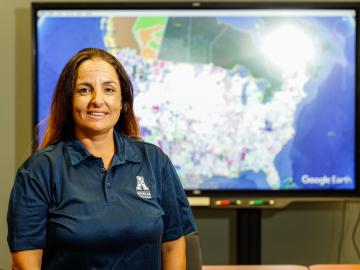
Isabelle Snyder calls faults as she sees them, whether it’s modeling operations for the nation’s power grid or officiating at the US Open Tennis Championships.

Electro-Active Technologies, Inc., of Knoxville, Tenn., has exclusively licensed two biorefinery technologies invented and patented by the startup’s co-founders while working at the Department of Energy’s Oak Ridge National Laboratory. The technologies work as a system that converts organic waste into renewable hydrogen gas for use as a biofuel.

IDEMIA Identity & Security USA has licensed an advanced optical array developed at Oak Ridge National Laboratory. The portable technology can be used to help identify individuals in challenging outdoor conditions.

A new method developed at Oak Ridge National Laboratory improves the energy efficiency of a desalination process known as solar-thermal evaporation.
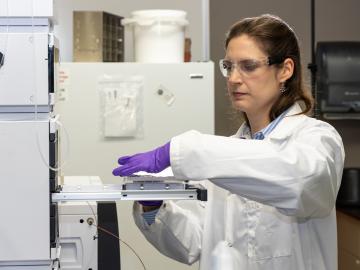
Early career scientist Stephanie Galanie has applied her expertise in synthetic biology to a number of challenges in academia and private industry. She’s now bringing her skills in high-throughput bio- and analytical chemistry to accelerate research on feedstock crops as a Liane B. Russell Fellow at Oak Ridge National Laboratory.
A team of scientists led by Oak Ridge National Laboratory have discovered the specific gene that controls an important symbiotic relationship between plants and soil fungi, and successfully facilitated the symbiosis in a plant that

In Hong Wang’s world, nothing is beyond control. Before joining Oak Ridge National Laboratory as a senior distinguished researcher in transportation systems, he spent more than three decades studying the control of complex industrial systems in the United Kingdom.
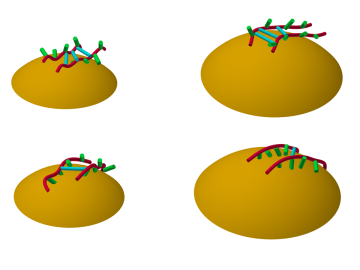
A team of researchers at Oak Ridge National Laboratory have demonstrated that designed synthetic polymers can serve as a high-performance binding material for next-generation lithium-ion batteries.
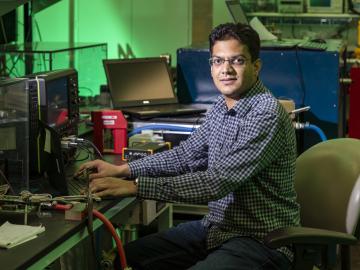
Galigekere is principal investigator for the breakthrough work in fast, wireless charging of electric vehicles being performed at the National Transportation Research Center at Oak Ridge National Laboratory.
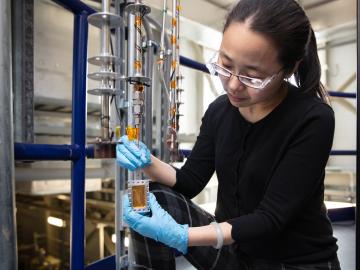
Researchers at the Department of Energy’s Oak Ridge National Laboratory, Pacific Northwest National Laboratory and Washington State University teamed up to investigate the complex dynamics of low-water liquids that challenge nuclear waste processing at federal cleanup sites.


